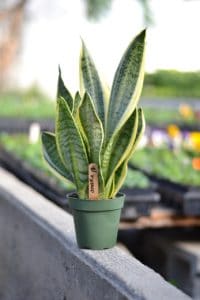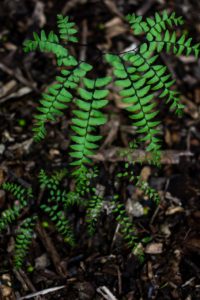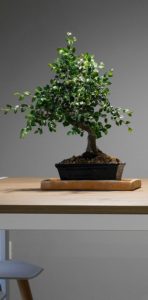Some links in the post are affiliate links and I get a commission from purchases made through some links found in the post.
Welcome to best plants to have in an office with no windows, hope you enjoy the article!
Working day in day out can be quite monotonous for office workers, especially the nature enthusiasts who get very little time in their busy routine to cherish even the awe-inspiring moments of dusk and dawn.
And this dull cycle can leave them feeling down and disconnected with mother nature.
To solve this problem, the addition of indoor plants can be a sure way to boost productivity and satisfaction at your workplace.
These hardy plants require practically zero to little maintenance and can even survive with no sunlight at all.
So even if your office has little access to natural light or worse, no windows at all, then with careful selection of plants you can still enjoy the gifts of nature in your daily workplace.
In addition to adding a green touch to your office, these plants really help to keep the air clean, fresh and detoxified.
They reduce harmful volatile organic chemicals/compounds (VOCs) and can be an efficient way to filter the air naturally. So making them a part of your office is a no-brainer decision after all.
Top 8 Plants to Have in an Office with no Windows (Quick list):
Snake Plant (Sansevieria)
Spider Plant (Chlorophytum)
Chinese Evergreen
Money Plant (Golden Pothos/Devil’s Ivy)
ZZ Plant (Zamioculcasi)
Maidenhair Fern
Top 8 Plants to Have in an Office with no Windows:
Following are the plants which are absolutely amazing to have in your office even if they have no windows.
Even though you may not be an expert gardener, these plants are very easy to grow and are very resistant to dying.
Just adopting a few strategies will make these plants last for a very long time and you will cherish their growth over time.
1) Snake Plant (Sansevieria)
 Sansevieria trifasciata (commonly known as mother in law’s tongue or the snake plant), is one of the most popular and hardy species that you can choose to decorate your office with.
Sansevieria trifasciata (commonly known as mother in law’s tongue or the snake plant), is one of the most popular and hardy species that you can choose to decorate your office with.
They feature long slender sword like green leaves that range in size from 6 inches to 12 feet depending on the variety you select.
Most offices have a small pot placed on the corner of their desks with the beautiful leaves springing out from the base of the top soil.
Care: Snake plants require very little care and can practically survive without any sunlight at all.
Water them only when you feel the top soil has gotten dry or just simply dump your half-empty water bottle on your way out every week or two and you are good to go!
2) Spider Plant (Chlorophytum)
Spider plants require extremely low upkeep and thrive in partial shade to virtually non-existent natural light. They grow well in well aerated and fast draining soils.
These plants can grow up to 24 inches and then present with profuse arching leaves which look fabulous when they are placed in hanging pots and look especially gorgeous when hanged in corners of the office.
They are well known to purify air rapidly and remove harmful compounds in the air such as formaldehyde1
Care: These tough plants can tolerate lots of abuse and are excellent specimens of experimentation for the beginner gardeners.
A spider plant need watering every 2 to 3 days in summers and in winter they bode well even with weekly spray of water.
Just take extra precaution not to make the soil too soggy otherwise the plants will start to wilt.
3) Chinese Evergreen
Among the plants that need little sunlight, or next to none, is the Chinese Evergreen (Aglaonema). This is a great plant to handle especially for the beginner’s lot.
This sturdy plant is wonderfully easy to grow. It tolerates just about every indoor condition so having an office with no windows doesn’t pose a risk at all.
The varieties with darker leaves can easily grow in low light while the varieties with colored leaves such as pink or orange prefer some medium natural light for optimal growth.
Care: The plant is not that demanding in terms of water requirement and you can sprinkle it once every few weeks.
Plus, there is no excessive fertilizer need as well and it can grow equally good if the initial soil of the pot is well enriched with nutrients.
For staying on the safe side it can be fertilized once or twice a year with any organic fertilizer.
4) Money Plant (Golden Pothos/Devil’s Ivy)
Devil’s ivy very commonly known as money plant, is a very popular plant grown in South East Asia.
It is called so because it’s almost impossible to kill and it stays green even when kept in the dark. This plant can flourish easily without direct sunlight and is a great climber as well.
It can also prove to be a great natural outliner for cupboards and doors. It’s a great purifier as well and can be a great addition to your detox line up of plants in your small office cabin.
Care: This house plant can flourish in any pot filled with ordinary garden soil. Basically, any regular houseplant mix with good drainage is more than enough for this sturdy plant.
It prefers to grow in a slightly moist soil but can easily withstand irregularities in watering and occasional drought conditions for a short period.
Just water it whenever you feel the top soil looks a bit dry and you are good to go.
5) ZZ Plant (Zamioculcasi)
The ZZ plant, or Zamioculas zamiifolia, is one of the most low upkeep plants you can ever find. In addition, it adds a unique tropical essence to your office space.
The step ladder leaf pattern of this plant is very pleasing too look. And it can survive with almost no sunlight at all. So having no windows in the office is absolutely no biggie for these plants.
Care: Like all the listed plants above, this one is no exception in proving its ability to withstand water deficient and shady conditions.
It requires watering only when the soil at the top starts to appear dry. It is best to water this plant less as overwatering can cause both the stem and the roots (rhizomes to be specific) to rot underneath.
6) Areca Palm
This is one of the most aesthetic plants that can survive dark conditions and is highly suitable for workplaces and offices where there isn’t much direct exposure to natural light.
The areca palm also holds the title of “the best recommended indoor air purifier” by NASA.
The graceful and arching leaves makes it a very attractive addition to the whole aesthetic of the office.
They have an adaptive edge over other plants as they are naturally found to grow beneath dense canopies and survive in areas of almost complete darkness with flying ease.
So having no windows in the office won’t affect these plants much.
Care: It grows best in indirect sunlight with shade from the hot sun. It can fare well with no light as well but the growth will be a little slower as compared to growth in slight exposure to sunlight.
Water it after every 2 or 3 days in summers while in winters watering each week will suffice.
7) Maidenhair Fern
 Maidenhair ferns (Adiantum spp.) are very beautiful plants that require very little sunlight.
Maidenhair ferns (Adiantum spp.) are very beautiful plants that require very little sunlight.
Their light feathery green fronds add a unique charm to any setting they are placed in.
They are relatively more work as compared to the plants already mentioned above but the extra care is totally worth the aesthetic it provides.
Care: These plants prefer high humidity and a moist soil. They are well optimized for growth if they are watered in a balanced way.
They must not be over-watered as this can easily cause root rot nor under-watered to make them die.
To make the surroundings humid, place a saucer beneath the pot and fill it with water. It will make the work easier rather than buying a humidifier exclusively for the plant.
8) Philodendron
Philodendron look very similar to pothos plants as the shape of the leaves show a remarkable resemblance.
However, the leaves of philodendrons are covered by a sheath when they first come out but it is gradually shed off.
These plants are often used for hanging baskets but can also be used for climbing trellis as well.
Care: This plant is very easy to grow and is a great choice for new hobbyists. It can survive fairly easy in halogen light as well.
As it’s a climber, it may need some pruning every now but it is totally manageable as it’s a slow growing specie.
Watering is needed once a week and some humidity can also make the leaves appear fresh.
Can an Indoor Plant Bring Creatures into The Office?
Yes, indoor plants certainly attract bugs and creatures alike into the office.
But as compared to the plants growing outside, these plants have to face very few and far problems in between.
And for this sole reason these plants are an exclusive choice for office decorators all over the world.
And if you have no windows in your office room then this further adds to the protection from insects coming from the outside.
The bugs are usually attracted to moist and humid conditions that are essential for their reproduction.
The most common insects that flourish in such environment include gnats, aphids, whiteflies and thrips.
Good maintenance and proper watering schedule keeps the risk of infestation at a very low level.
And even if the attacks do occur they rarely cause significant damage and they can be treated easily in a very short time.
If the following steps are exercised, then you can rest assured that these problems won’t be of any burden to you in the future.
- Prevent overwatering the plants
- Don’t leave water standing in the pots after each time you water them.
- Keep good circulation of air in your office space. Occasionally leave your office door open for 30 minutes each day.
- Keep the windows closed at best and only open them for a short duration if the need for air circulation arises.
- Prevent overcrowding of plants in a single space. Rather spread the plants to maximize the coverage area i.e. placing plants in opposite corners of the room.
- Monthly spray of organic neem oil on the plants can extinguish all the chances of pests to show up at all.
What Plant Allergies are There to Look Out for in Office?
There are a lot many reasons to have plants in the home or office as compared to the problems they might cause you such as allergic reactions or pest infestations.
Indoor plants are hugely beneficial in a many ways but some plants do pose additional risks of exacerbating allergies in the already susceptible people.
While some plants can cause allergies, many can help alleviate them as well.
The most common symptoms when it comes to plant allergies are:
- Puffiness
- Itchy rash (Contact dermatitis)
- Excessive sneezing
- Redness or itchy eyes
- Watery eyes (epiphora)
Go For More Green!
Overall the plants which do not flower are very less likely to produce allergic symptoms as they rarely produce pollen.
Flowers no doubt look beautiful but they will have you sneezing in no time. For this reason, it is recommended to have plants that don’t flower at all.
Using snake and spider plants is a good choice. Other than that, some palms such as Areca Palms are also a great substitute as well.
Preventing Build Up of Molds
Another reason to the allergies you might face is linked to the overwatering of the plants.
Moist soggy soil and stagnant water in the pots provide an optimum culture for fungus and molds to grow.
These produce spores which when inhaled cause respiratory problems.
This problem can easily be avoided by keeping the plants in well-lit and well aerated areas and keeping in check the amount of water administered to the plants.
Monthly cleaning around the plants will make sure that this problem doesn’t even occur in the first place.
Final Thoughts: Best Plants to Have in an Office with no Windows
 Maintaining plants may be a little bit tough for some people as they have the anxiety of not having the greenest thumb among their peers.
Maintaining plants may be a little bit tough for some people as they have the anxiety of not having the greenest thumb among their peers.
But in reality the indoor plants enlisted above are very easy to maintain and don’t require that much effort at all.
The pros definitely outweigh the cons and concerns you may have in your mind.
And I am pretty sure that once you get your first plant you will be rooting for more and won’t stop planning to place the next ones in the other lonely corner of the office as well.
I would definitely recommend starting out with snake and spider plants as they are no headache at all.
And once you get used to them you can go with plants that require a little bit of effort like maiden ferns or palms.
These little additions will lighten up your mood each time you visit your gloomy office and will definitely boost your productivity and reduce the stress of your daily work load as well.
About the Author:
Saad Ansar
Saad is an avid gardener himself and is a great lover of plants, animals, photography, & people. Currently, he is focused on photographing indoor plants & captioning beautiful outdoor sceneries. He writes and rewrites in depth articles on nature and science.

